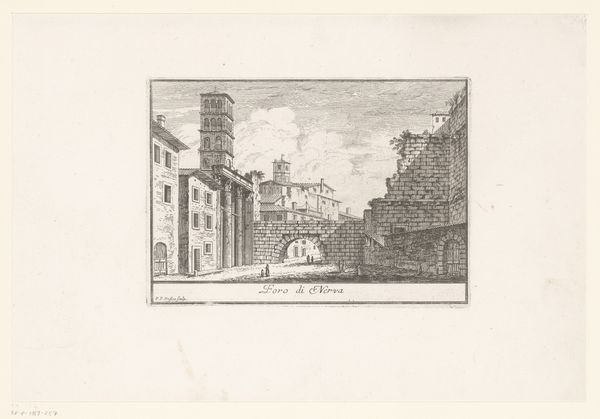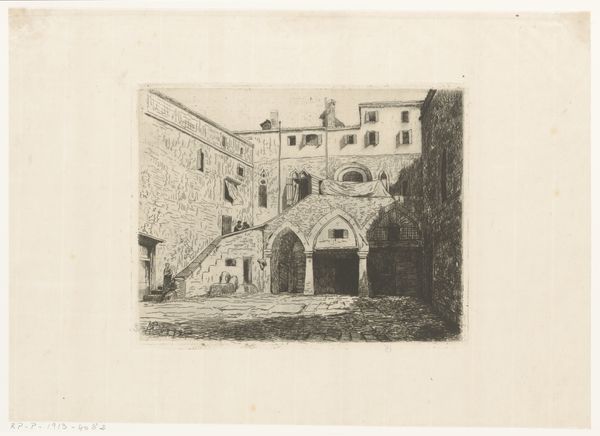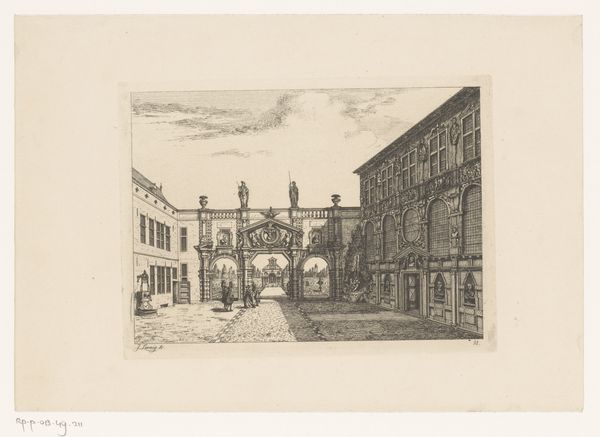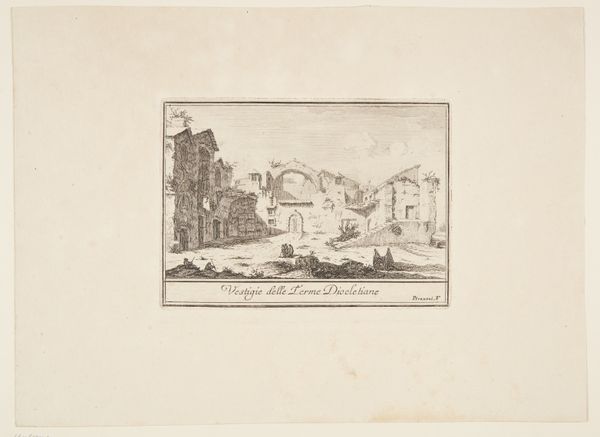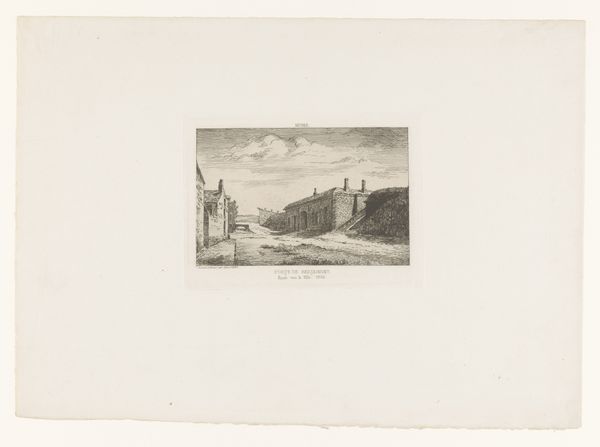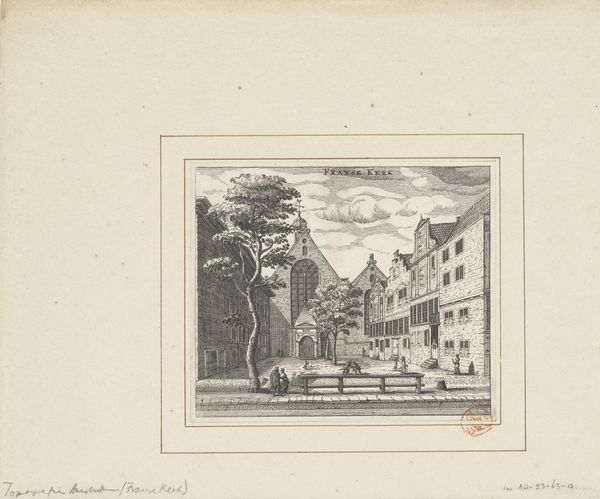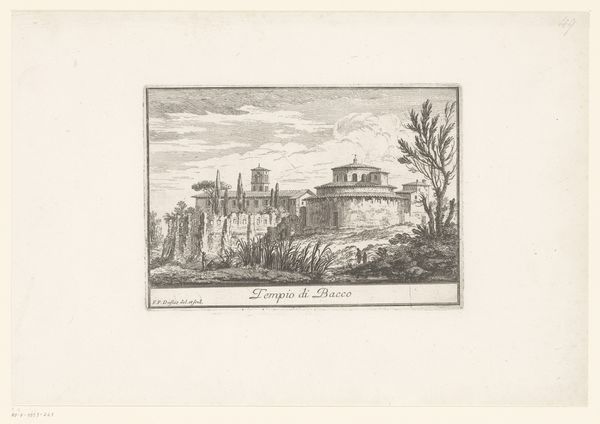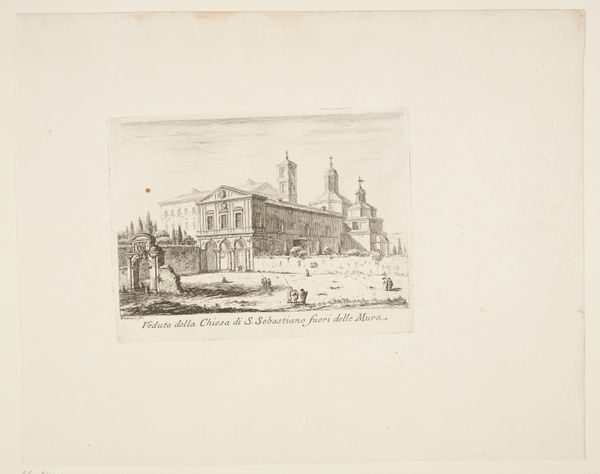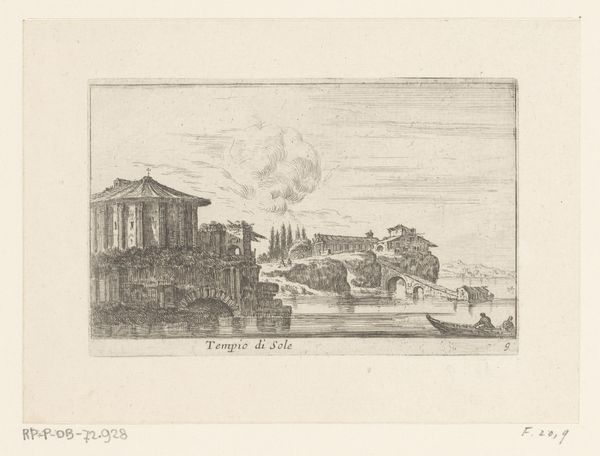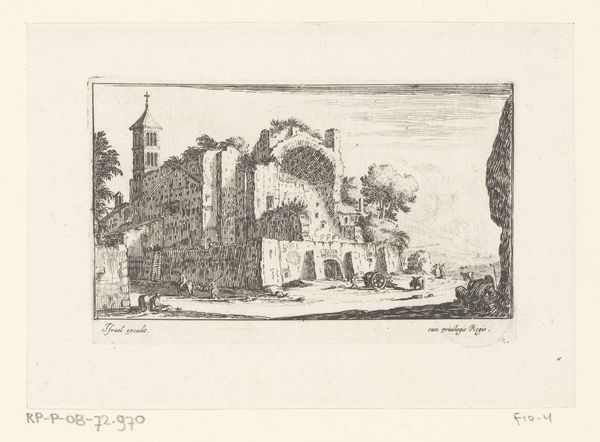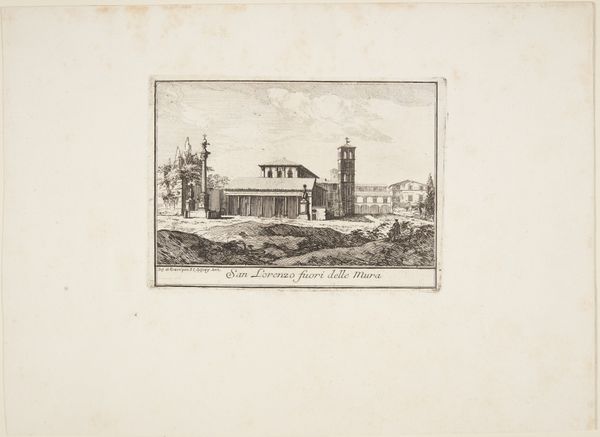
Dimensions: height 132 mm, width 185 mm
Copyright: Rijks Museum: Open Domain
Philothée François Duflos made this print of the Temple of Vesta, using an etching technique, sometime in the first half of the 18th century. Etching involves covering a metal plate with a waxy, acid-resistant layer. The artist then scratches an image into the wax, exposing the metal beneath. The plate is submerged in acid, which bites into the exposed lines. The longer it sits, the deeper the lines become, which ultimately dictates the darkness of the printed line. Here, we can see how Duflos used a variety of line weights to describe the architecture in great detail. Etching allowed for relatively quick reproduction, aligning with the growing market for images during this period, and making architectural views accessible to a broader public. Ultimately, understanding Duflos's print requires us to consider both its artistic skill and its function within the broader visual culture of the 1700s.
Comments
No comments
Be the first to comment and join the conversation on the ultimate creative platform.
